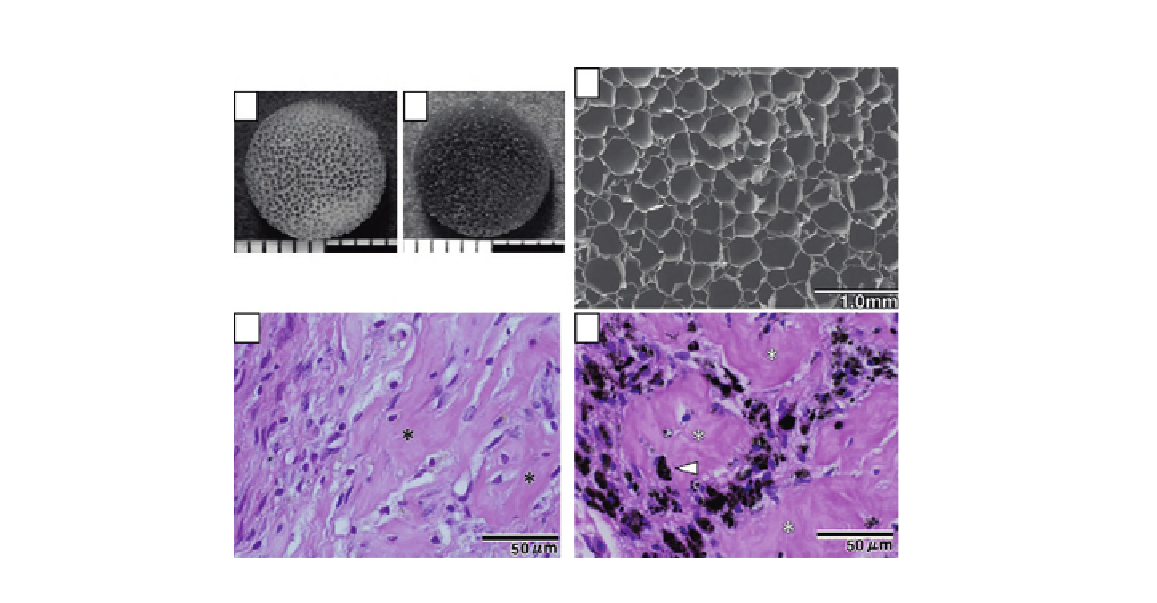Biomedical Engineering Reference
In-Depth Information
(C)
(B)
(A)
5.0 mm
5.0 mm
(D)
(E)
FIGURE 18.5
(A) The whole shape of the uncoated collagen sponge honeycomb and (B, C) MWCNT-coated sponge.
Histology at 28 days after implantation of each sponge with osteoblasts cultured for 1 day in the
subcutaneous tissue. (A) After implantation of the uncoated sponge, flattened bone-like tissue is observed.
(B) The bone formed in the transplanted sponge coated with MWCNTs maintains the original shape of the
sponge even after the sponge walls have been absorbed. Some of the MWCNTs (white arrowhead) are
attached to the bone tissue (white asterisk) directly.
Reproduced with permission from Ref.
[31]
.
nanofibers. Histologic examinations showed that periodontal ligament cells (PDLCs) attached on the
membranes functioned well in vivo, while the growth of gingival epithelial cells (GECs) was prohib-
ited on electrospun PLLA/MWCNT/HA membranes. In orthopedic applications, early cellular events
(such as cell adhesion) are critical since subsequent cell functions are influenced by such early events.
Therefore, this selectivity in the initial stages of cellular interaction with high surface energy CNTs/
CNFs may give such materials an advantage over current orthopedic/dental materials.
CNFs/CNTs can influence cell behaviors in many ways, and this effect is governed by surface
area, energy, chemistry, and roughness. Although the exact mechanism of why and how cell functions
are affected by CNTs/CNFs remains unclear, protein adsorption and conformation on CNF/CNT
materials clearly play an important role in increasing their bioactivity. Myoblastic mouse cells
(C2C12) are a multipotent cell line that is capable of differentiating toward different phenotypes
under the action of specific proteins, chemical, or biological factors. Li et al.
[35]
cultured them on
MWCNT and graphite compacts, respectively. They found that the ALP activity by C2C12 cells on
MWCNTs was significantly higher than on graphite, suggesting that MWCNTs were able to induce
C1C12 cells to differentiate into osteogenic cells more than graphite. The authors had observed

